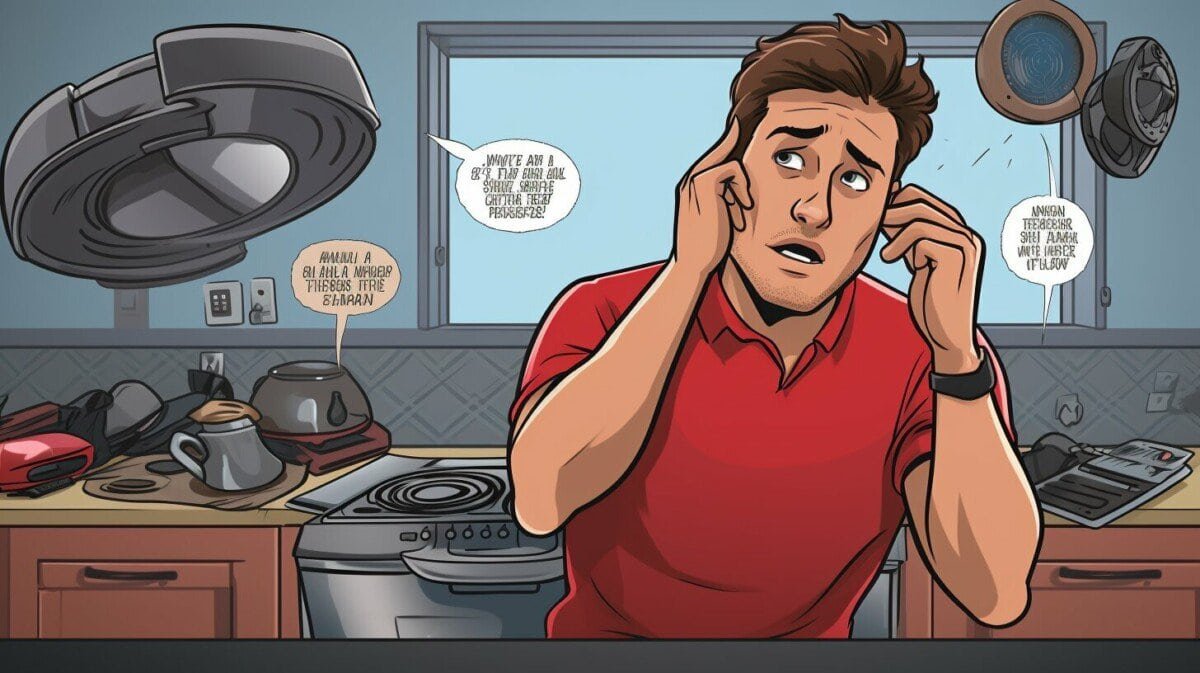Electrical issueswner, a dryer not producing heat can be frustrating and costly. Not only does it interrupt the laundry routine, but it also increases the risk of potential fire hazards. Troubleshooting dryer not heating issues is crucial to maintaining a functioning appliance. In this article, we’ll cover the most common reasons for a dryer not heating, how to fix it, and give you some useful tips for diagnosing the problem. Let’s get started with our troubleshooting guide.
Reasons for Dryer Not Heating
When a dryer stops producing heat, it can be frustrating and time-consuming to figure out what went wrong. Knowing the most common reasons for a dryer not heating can help you troubleshoot the problem and get your dryer back up and running again quickly. Here are the top reasons why your dryer may not be producing heat:
| Reason | Description |
|---|---|
| Faulty Heating Elements | Heating elements are essential to producing heat in a dryer. If they become faulty, the dryer will not heat up. |
| Faulty Thermostats | Thermostats regulate the temperature inside the dryer. If they become faulty, the dryer will not heat properly. |
| Clogged Venting | Clogged venting can prevent hot air from circulating inside the dryer, causing it to stop producing heat. |
| Broken Belt | A broken belt can prevent the dryer drum from spinning, causing it to stop producing heat. |
| Electrical Problems | Electrical issuesElectrical issueslown fuse or tripped breaker, can also cause a dryer not to produce heat. |
It’s important to identify the cause of the problem, rather than simply trying to fix the symptom of a dryer not heating. By understanding the most common reasons for a dryer not producing heat, you can troubleshoot the issue effectively and get your dryer running again in no time.
How to Fix Dryer Not Heating
If you’ve identified the cause of your dryer not heating, it’s time to fix the issue. Depending on the problem, you may need to replace a part or simply clean out some components. Here’s a step-by-step guide for fixing the most common dryer heating problems:
Faulty Heating Element
If the heating element is broken, you’ll need to replace it. Follow these steps:
- Unplug the dryer and locate the heating element, which is usually behind the dryer drum or on the back wall of the dryer.
- Remove the panels or the dryer drum to access the heating element.
- Test the heating element with a multimeter to confirm that it’s faulty. If it is, order a replacement heating element that’s compatible with your dryer make and model.
- Install the new heating element, replace any panels or the dryer drum, and plug in the dryer.
Faulty Thermostat
If the thermostat is the problem, follow these steps:
- Unplug the dryer and locate the thermostat, which is usually on the blower housing or the heating element housing.
- Test the thermostat with a multimeter to confirm that it’s faulty. If it is, order a replacement thermostat that’s compatible with your dryer make and model.
- Remove the faulty thermostat and install the new one.
- Plug in the dryer and test it to see if it’s producing heat again.
Clogged Venting
If the venting is clogged, you’ll need to clean it out. Follow these steps:
- Unplug the dryer and pull it away from the wall.
- Disconnect the vent hose from the back of the dryer as well as any external vents or ducts.
- Use a vent cleaning brush or a vacuum attachment to remove any lint or debris from the vent hose, external vents, and ducts.
- Reconnect the vent hose, external vents, and ducts, and plug in the dryer.
Broken Belt
If the dryer belt is broken, follow these steps:
- Unplug the dryer and remove the panels or the dryer drum to access the broken belt.
- Slide the new belt over the drum and around the motor and pulleys, following the manufacturer’s instructions for your specific dryer model.
- Replace any panels or the dryer drum and plug in the dryer.
If these steps don’t solve your dryer not heating issue, it may be time to call in a professional repair service to help diagnose and fix the problem.
Troubleshooting Tips for Dryer Not Producing Heat
If you notice your dryer is not getting hot, there are several troubleshooting steps you can take to identify and fix the problem. Here are some tips to help you get started:
| Step | Description |
|---|---|
| 1 | Check the power supply |
| Make sure the dryer is plugged in and receiving power. If it’s not, check the circuit breaker or fuse box to see if a fuse has blown or the circuit has tripped. | |
| 2 | Inspect the exhaust hose |
| Check the exhaust hose for any blockages, such as lint or debris. A clogged exhaust hose can cause the dryer to overheat and shut off the heating element. | |
| 3 | Examine the lint filter |
| Remove the lint filter and clean it thoroughly. A dirty, clogged lint filter can cause the dryer to overheat and shut off the heating element. | |
| 4 | Check for faulty heating elements or thermostats |
| If the power supply, exhaust hose, and lint filter are all functioning properly, the problem may be a faulty heating element or thermostat. Use a multimeter to test these components and replace them if necessary. |
Keep in mind that some dryer not heating issues may require the assistance of a professional. If you’re unsure of how to proceed, or if none of these troubleshooting steps solve the problem, it may be time to call in a repair technician.
How to Test a Dryer Heating Element
If your dryer isn’t producing heat, one common culprit could be a faulty heating element. Here’s how you can test it to see if it needs to be replaced:
- Unplug your dryer and locate the heating element. It’s typically located in the back of the dryer and can be accessed by removing the back panel.
- Remove the wires connecting the heating element to the dryer.
- Using a multimeter, set it to the ohms setting and touch the probes to the heating element’s terminals. A properly functioning heating element should read between 0 and 50 ohms.
- If the reading is outside of this range, the heating element is faulty and needs to be replaced.
- If you need to replace the heating element, purchase a replacement part that’s compatible with your specific dryer model.
- Install the new heating element by reconnecting the wires and reattaching the back panel. Plug your dryer back in and test it to ensure that it’s now producing heat.
Remember to always unplug your dryer before performing any repairs or maintenance.
How to Test a Dryer Thermostat
A malfunctioning thermostat is a common reason for a dryer not producing heat. If your dryer isn’t heating properly, it’s worth checking the thermostat to see if it needs to be replaced. Before you begin, make sure you unplug the dryer and turn off the gas supply (if applicable).
Types of Dryer Thermostats
Dryer thermostats come in two types: bi-metal and electronic. Bi-metal thermostats have a metal strip inside that bends when it gets hot, turning off the circuit. Electronic thermostats use sensors to detect the temperature and turn off the circuit when necessary. Depending on your dryer model, you may have both types of thermostats or just one.
How to Test a Bi-Metal Dryer Thermostat
- Locate the thermostat on the dryer. It’s usually near the heating element or burner assembly.
- Disconnect the wires from the thermostat.
- Set your multimeter to the “Ohms” function.
- Place one probe on each terminal of the thermostat.
- If the multimeter reads “0”, the thermostat is functioning properly. If it reads “infinity”, the thermostat is defective and needs to be replaced.
How to Test an Electronic Dryer Thermostat
- Locate the thermostat on the dryer. It may be attached to the blower housing or the heating element assembly.
- Disconnect the wires from the thermostat.
- Set your multimeter to the “Volts AC” function.
- Turn on the dryer and let it run for a few minutes.
- Place one probe on each terminal of the thermostat.
- If the multimeter reads “0”, the thermostat is functioning properly. If it reads a voltage, the thermostat is defective and needs to be replaced.
If your dryer thermostat is malfunctioning, you can replace it yourself or seek professional help. Replacing a thermostat involves removing the faulty part and installing a new one in its place. Make sure you purchase the correct replacement part for your dryer model.
How to Clean a Dryer Vent
If your dryer is not producing heat, a clogged vent may be the culprit. Cleaning a dryer vent is an important maintenance task that should be done regularly to prevent fires and improve dryer performance. Here’s how to clean a dryer vent in a few easy steps:
- Turn off the dryer and unplug it from the power source.
- Locate the vent on the back of the dryer and disconnect the vent hose.
- Use a vent cleaning brush to remove lint buildup from the inside of the vent hose.
- Use a vacuum cleaner to remove any remaining lint from the vent hose and the vent on the back of the dryer.
- Reconnect the vent hose to the dryer and plug it back in.
You should clean your dryer vent at least once a year, or more often if you do a lot of laundry. A clogged vent not only reduces dryer performance but can also pose a fire hazard. By following these simple steps, you can keep your dryer running efficiently and safely.
How to Clean a Dryer Lint Filter
A clogged lint filter can cause your dryer to not get hot. Cleaning the lint filter is an easy task that should be done regularly to ensure proper dryer function and prevent a potential fire hazard.
Follow these steps to clean your dryer lint filter:
- Locate the lint filter. It’s usually located inside the door or on top of the dryer.
- Pull the lint filter out of its slot.
- Remove any visible lint from the filter by hand or with a soft brush.
- Rinse the lint filter with water and let it dry completely.
- Insert the lint filter back in its slot.
It’s important to clean the lint filter after every use. If the lint buildup is very heavy, you can use a vacuum cleaner to remove the excess lint.
Pro tip: If your dryer has a removable lint filter, you can wash it with soap and water to remove any stubborn lint buildup. Just make sure to let it dry completely before using it again.
How to Replace a Dryer Belt
If your dryer is not heating, a broken belt may be the culprit. Replacing a dryer belt is a straightforward process that can be done in just a few steps.
Here’s what you’ll need:
- New dryer belt
- Screwdriver
- Pliers
1. Unplug the dryer from the electrical outlet to ensure your safety.
2. Locate the dryer belt. It’s typically found around the drum and connected to the motor.
3. Use a screwdriver to remove the panel at the back of the dryer.
4. Use pliers to release the tension on the old belt, and then remove it from the motor and the drum.
5. Install the new belt around the drum, making sure it’s aligned correctly.
6. Loop the belt around the motor pulley, and then release the tension to secure it in place.
7. Rotate the drum a few times to ensure the belt is properly aligned and seated in the grooves.
8. Replace the back panel and plug the dryer back in.
Testing the dryer after replacing the belt is an important step to ensure it’s functioning properly. Simply turn the dryer on and let it run for a few minutes to confirm that it’s heating up and that the drum is turning.
By following these steps, you can replace a broken dryer belt and get your dryer up and running again quickly and easily.
Other Common Causes of Dryer Not Heating
In addition to the main causes of a dryer not producing heat, such as faulty heating elements or clogged venting, there are a few other culprits that homeowners should be aware of.
Electronic Control Board
The electronic control board is essentially the brain of the dryer, controlling various functions such as temperature and cycle time. A malfunctioning control board can cause the dryer not to heat up properly. If the heating element and other components have been ruled out, it may be necessary to replace the electronic control board.
Gas Valve Solenoid
For gas-powered dryers, the gas valve solenoid is responsible for opening the gas valve and allowing gas to flow to the burner. If the solenoid malfunctions, the valve won’t open and the dryer won’t produce heat. Testing the solenoid with a multimeter can determine if it needs to be replaced.
Thermal Fuse
The thermal fuse is a safety feature that shuts off the dryer if it overheats. If the fuse is blown, the dryer won’t heat up at all. Testing the fuse with a multimeter can determine if it needs to be replaced.
While these issues are less common, they can still occur and cause a dryer not heating problem. It’s important to properly diagnose the issue to avoid wasting time and money on unnecessary repairs.
FAQ: Troubleshooting Dryer Not Heating
Here are some frequently asked questions about how to troubleshoot a dryer not heating issue:
How can I tell if my dryer heating element is bad?
If your dryer is not producing heat, the heating element could be the culprit. You can test the heating element with a multimeter to see if it’s functioning properly. If it’s not, you’ll need to replace it.
How do I diagnose a gas dryer not heating?
If you have a gas dryer, there are a few potential causes of it not heating. Check that the gas supply valve is open and that the gas line is not kinked or clogged. If those are not the issue, the gas valve solenoids or the igniter could be faulty and will need to be replaced.
Why is my dryer producing heat but not drying clothes?
If your dryer is producing heat but not drying clothes, there may be an issue with the airflow. Check the exhaust hose and venting for clogs or obstructions. Additionally, make sure the lint filter is clean and free of debris. If those are not the issue, the moisture sensor or cycling thermostat could be faulty.
When should I call in a professional to fix my dryer?
If you have attempted to troubleshoot your dryer not heating issue and are still unable to identify or fix the problem, it’s time to call in a professional. Additionally, if you are uncomfortable working with electrical or gas connections, it’s best to leave it to the experts.




